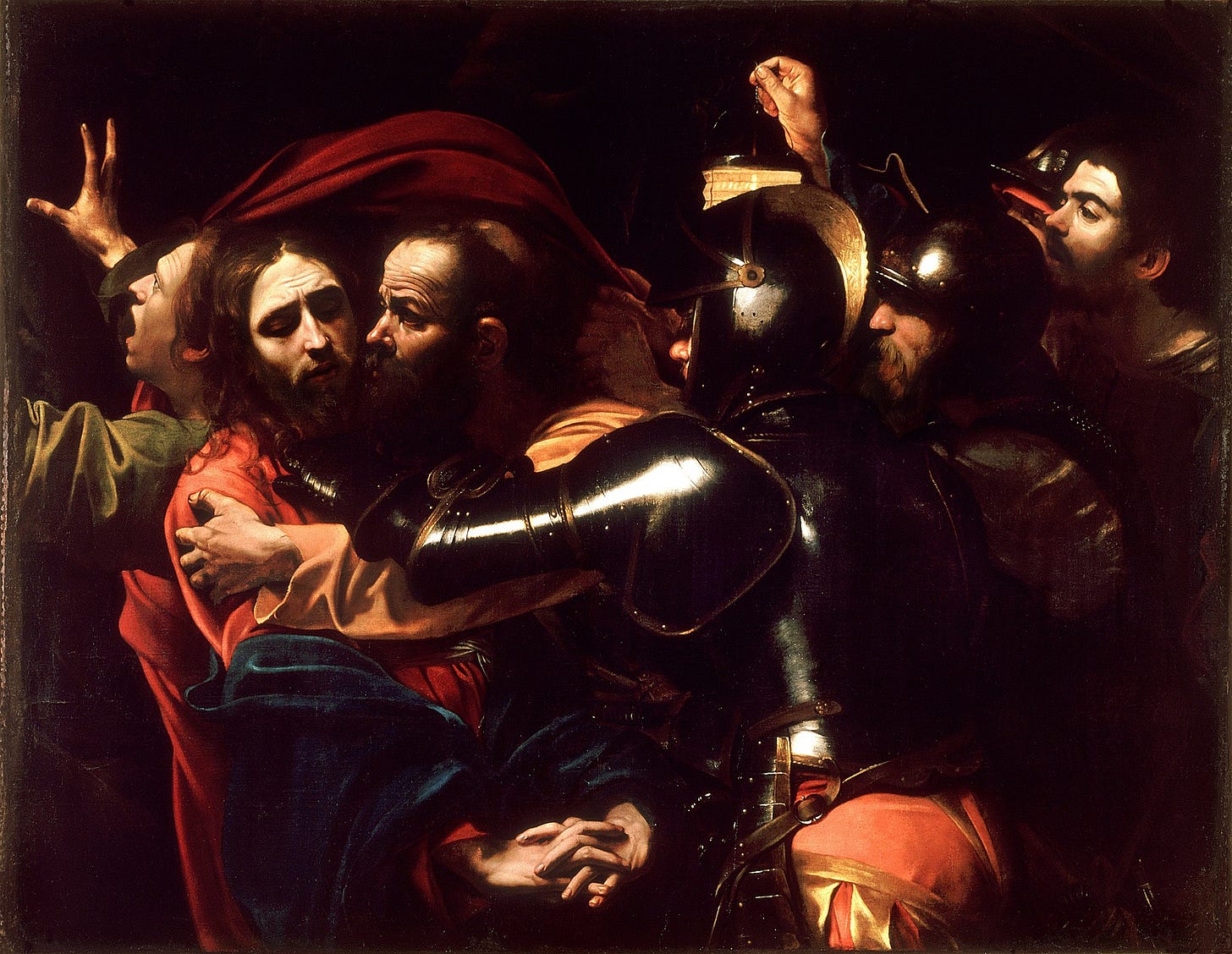Close-up with Reality
How Caravaggio's strong contrasts of light and dark represent the more sordid, unpalatable side of humanity.
At the turn of the 17th century, Rome was the place to be if you were an artist. In response to the Counter-Reformation,1 the Church started to commission new art work it could use as powerful propaganda against the protestant faith.
Artists were asked to produce emotionally intense works accessible and realistic enough to inspire the masses. Caravaggio, who’d rather spend time in a tavern than a church, understood the masses more than most.
The painter arrived in Rome in 1592. He was young, broke, homeless, and had already been in trouble with the authorities. Rome’s atmosphere was rich in humanity: nuns and cardinals rubbed shoulders with thieves and prostitutes.
Caravaggio felt right at home. His paintings close-up mirrors to society of the poverty and common humanity of even the most revered. Inches from their faces, we can see the pain of the holy and the regret of the betrayers.
Reminder: You can support my work and get extra insights—in-depth information, ideas, and interviews on the value of culture.
Join the premium list to access new series, topic break-downs, and The Vault.
Betrayal—the kiss of death
The betrayal by kiss is a fascinating story Italian artists have portrayed for hundreds of years. But never with the honesty (we could call it cruelty) of Caravaggio. In the ‘Taking of Christ’ (above) he zooms right into the main deed, ignoring the rest.
Only the moon lights the scene. Although the man at the far side holds a lantern, that light is an ineffective source. In that man’s features Caravaggio portrayed himself as a passive spectator of the divine tragedy. He was 31.

It was unusual to have scenes cropped so tight in the 17th century. Caravaggio’s close-up work emphasizes Christ’s humanity. The light illuminates the protagonists from left to right, which suggests the divine.
Keep reading with a 7-day free trial
Subscribe to On Value in Culture to keep reading this post and get 7 days of free access to the full post archives.


